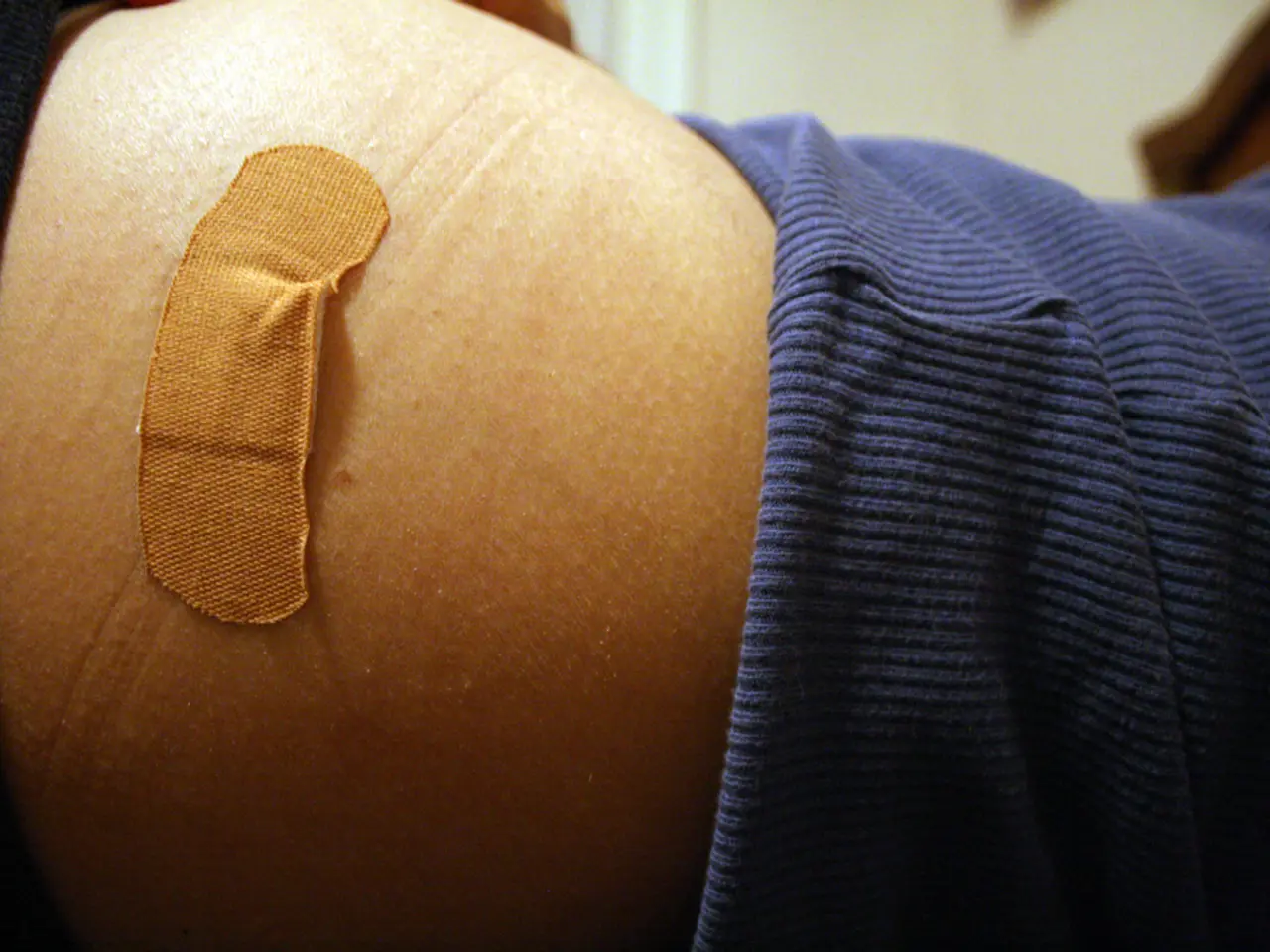Home Wound Cleaning Guide: Know When Self-Treatment Is Safe and When Professional Help Is Necessary
Caring for Minor Wounds: A Comprehensive Guide
When it comes to minor wounds like scrapes or cuts, home care is often sufficient. However, it's essential to assess the wound's seriousness before attempting any treatment. Here's a step-by-step guide for home care of minor wounds:
- Stop the Bleeding: Apply gentle pressure with a clean cloth or bandage until bleeding slows or stops.
- Clean the Wound: Gently clean the wound with mild soap and running water to remove dirt and debris. Avoid harsh products like hydrogen peroxide or alcohol that can damage healing tissue.
- Dry the Area: Dry the area carefully, patting around the wound but not the wound itself.
- Apply a Suitable Ointment or Moisturizing Gel: Apply a thin layer of petroleum jelly for cuts, or aloe vera or burn ointment without fragrance for burns, to help prevent infection.
- Cover the Wound: Cover the wound with a sterile, non-stick bandage or dressing that allows air circulation but protects from contamination.
- Change the Dressing Daily: Keep the wound clean by changing the dressing daily.
- Take Pain Relievers: Take over-the-counter pain relievers like ibuprofen or acetaminophen if needed for pain or inflammation.
By following these steps, you can promote healing while minimizing infection risk and tissue damage.
However, there are instances where medical help is necessary. If any of the following apply, seek immediate medical attention:
- The wound is large, deep (more than about 1/4 inch), gaping, or bleeding heavily and won’t stop with pressure.
- The wound shows signs of infection such as increasing redness, warmth, swelling, tenderness, throbbing pain, pus or drainage, red streaks spreading from the wound, or fever.
- The injury is caused by an animal or human bite, or by a rusty or dirty object (e.g., nail, fishhook).
- The wound is on the face or near bones where stitches might be needed.
- The person has not had a tetanus shot in the last 5 to 10 years.
- Blisters form (in burns) or if redness/pain last for more than a few hours.
- There is embedded debris or dirt that cannot be easily removed.
In any of these cases, a healthcare provider should evaluate the wound to prevent complications and ensure proper care.
In summary, careful cleaning, protecting, and monitoring of minor wounds at home can promote healing, but persistent or worsening signs require professional medical assessment. If bleeding persists through the gauze or cloth while seeking medical attention, continue applying pressure. Remove debris from the wound gently with clean tweezers. Cover larger wounds with sterile bandages, gauze, or saran wrap to protect them from further infection. Always use a washcloth, mild soap, and warm water to clean around the wound.
- It's important to remember that while home care can aid in the healing of minor wounds, one's opinion on the seriousness of the wound should always consider the risk factors associated with health and environment, such as wounds caused by contact with animals, rusty objects, or dirty surfaces, which may require professional medical assessment for health-and-wellness purposes.
- Adhering to a science-backed approach for home care of minor wounds is crucial, but maintaining an awareness of one's overall health and the potential impact of the environment on wound healing is equally essential in ensuring optimal health-and-wellness outcomes.




